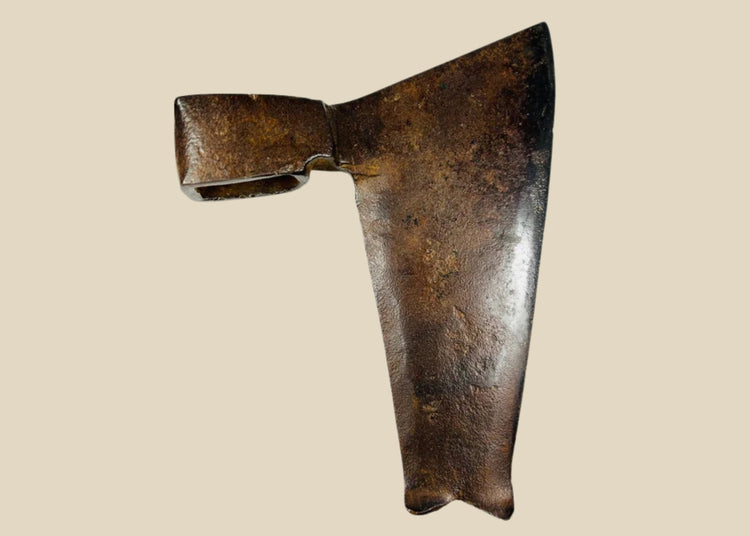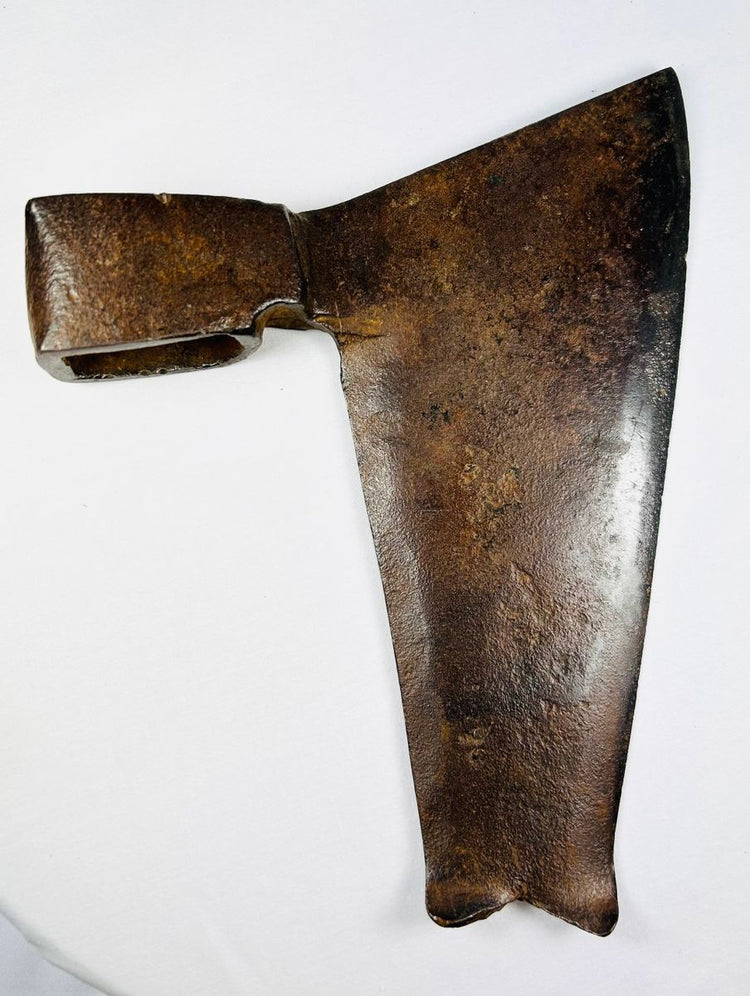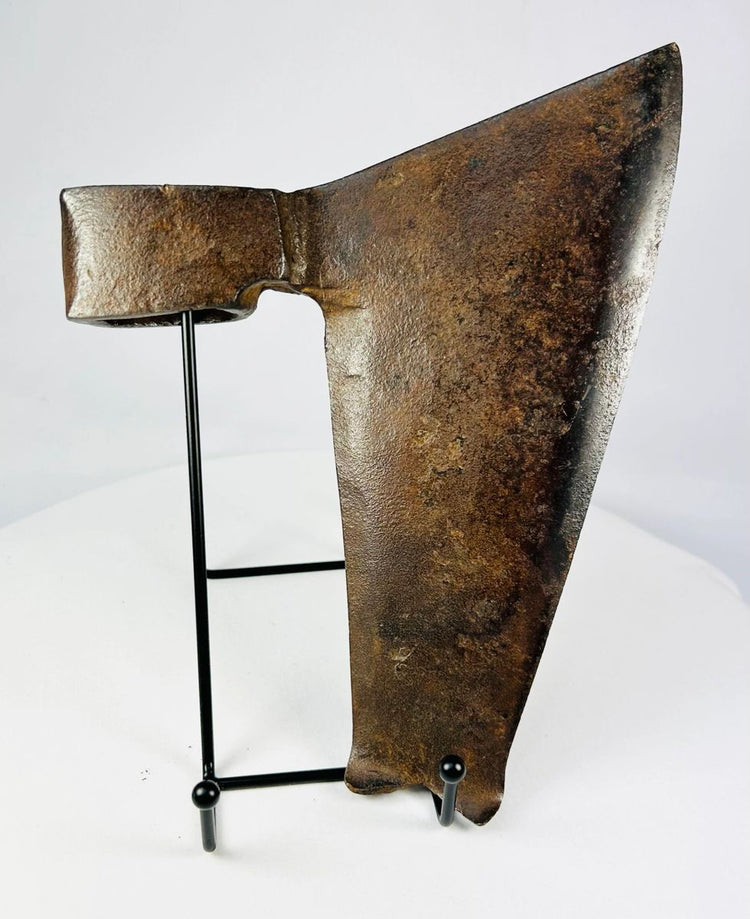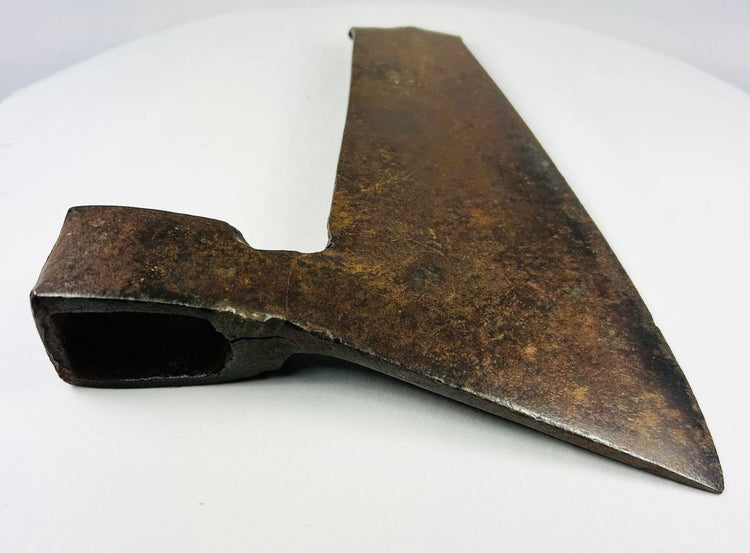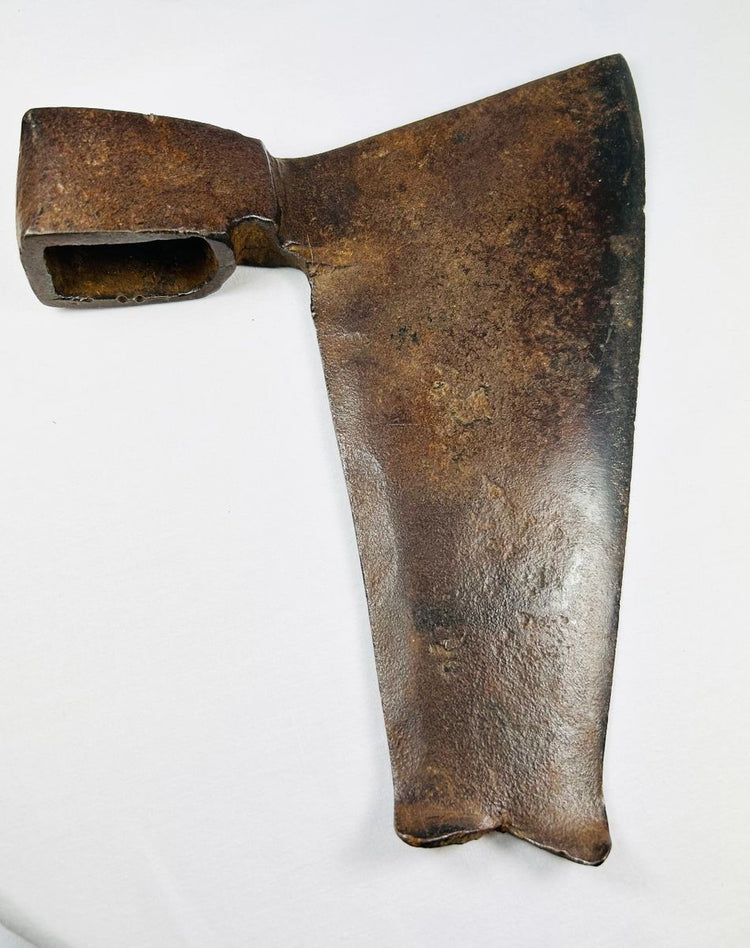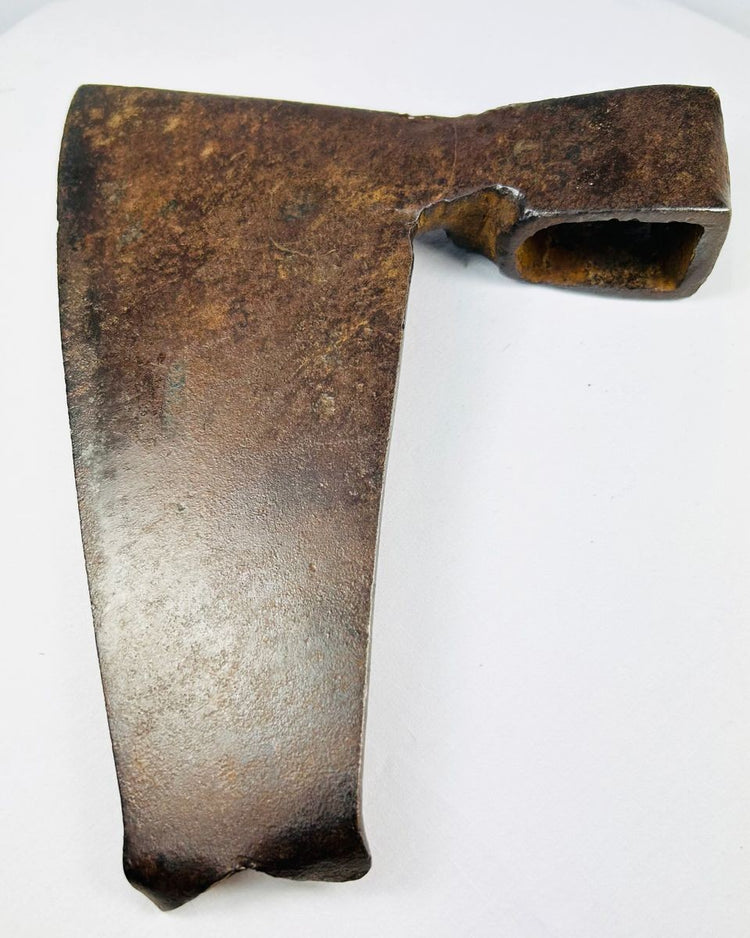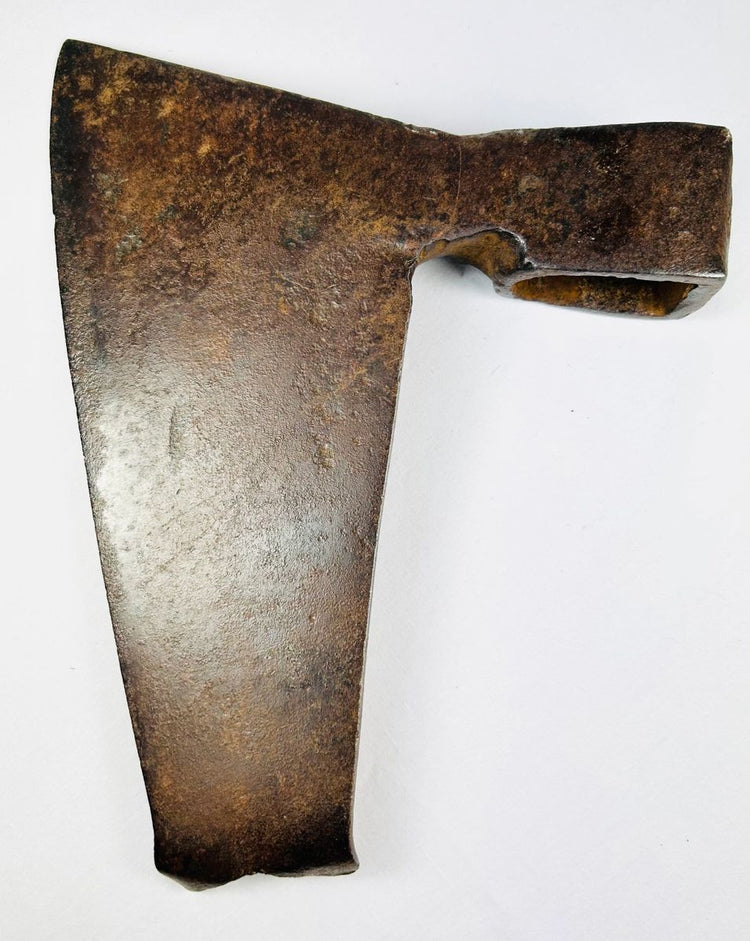Central European | Goosewing Fishtail Axe | 19th Century
Description
More
Less
Historical Context & Origin
Region: Central Europe (likely Germany or Austria)
Material: Forged iron with aged patina
Period: Early 19th Century
Description
This remarkable Goosewing Fishtail Axe is a fine example of early 19th-century European craftsmanship. Distinguished by its elongated, broad blade tapering into a fishtail-shaped end, the design perfectly balances elegance with utility. Goosewing axes were indispensable tools for carpenters and woodworkers, primarily employed for hewing and shaping timber into beams and planks, particularly in the construction of traditional timber-framed buildings.
Features
- Broad, slightly concave blade offering precision and control for woodworking tasks
- Distinctive fishtail-shaped end improving balance during use
- Expertly forged iron blade, demonstrating the skill of 19th-century blacksmiths
- Rich, stable patina in tones of brown and black, testifying to age and use
- Hollow socket designed to secure a wooden haft, ensuring durability and reliability
Cultural Significance
More than just a functional tool, the goosewing axe symbolized the heritage and pride of European carpentry traditions. Such axes were often prized possessions of master craftsmen, sometimes passed down through generations as cherished heirlooms. This piece embodies the artistry and technical ingenuity of its makers, bridging the gap between tool and cultural artifact.
Condition
The axe is well-preserved, with its beveled cutting edge intact and showing only minor wear consistent with historical use. The surface retains a stable patina, enhancing both authenticity and aesthetic appeal.
Dimensions (approximate)
Width: 9.25 in
Age
Circa early 19th Century
Description
Historical Context & Origin
Region: Central Europe (likely Germany or Austria)
Material: Forged iron with aged patina
Period: Early 19th Century
Description
This remarkable Goosewing Fishtail Axe is a fine example of early 19th-century European craftsmanship. Distinguished by its elongated, broad blade tapering into a fishtail-shaped end, the design perfectly balances elegance with utility. Goosewing axes were indispensable tools for carpenters and woodworkers, primarily employed for hewing and shaping timber into beams and planks, particularly in the construction of traditional timber-framed buildings.
Features
- Broad, slightly concave blade offering precision and control for woodworking tasks
- Distinctive fishtail-shaped end improving balance during use
- Expertly forged iron blade, demonstrating the skill of 19th-century blacksmiths
- Rich, stable patina in tones of brown and black, testifying to age and use
- Hollow socket designed to secure a wooden haft, ensuring durability and reliability
Cultural Significance
More than just a functional tool, the goosewing axe symbolized the heritage and pride of European carpentry traditions. Such axes were often prized possessions of master craftsmen, sometimes passed down through generations as cherished heirlooms. This piece embodies the artistry and technical ingenuity of its makers, bridging the gap between tool and cultural artifact.
Condition
The axe is well-preserved, with its beveled cutting edge intact and showing only minor wear consistent with historical use. The surface retains a stable patina, enhancing both authenticity and aesthetic appeal.
Dimensions (approximate)
Width: 9.25 in
Age
Circa early 19th Century
You May Also Like




















